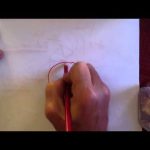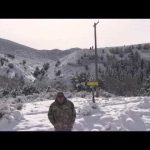JFK Film: Fact vs. Fiction – Historical Inaccuracies, Analysis, Assassination Controversy (1992)
JFK is a 1991 American political thriller film directed by Oliver Stone. It examines the events leading to the assassination of President John F. Kennedy and alleged subsequent cover-up through the eyes of former New Orleans district attorney Jim Garrison (Kevin Costner).
Garrison filed charges against New Orleans businessman Clay Shaw (Tommy Lee Jones) for his alleged participation in a conspiracy to assassinate the President, for which Lee Harvey Oswald (Gary Oldman) was found responsible by two government investigations: the Warren Commission, and the House Select Committee on Assassinations (which concluded that there could have been another assassin shooting with Oswald).
The film was adapted by Stone and Zachary Sklar from the books On the Trail of the Assassins by Jim Garrison and Crossfire: The Plot That Killed Kennedy by Jim Marrs. Stone described this account as a “counter-myth” to the Warren Commission’s “fictional myth”.
The film became embroiled in controversy. Upon JFK’s theatrical release, many major American newspapers ran editorials accusing Stone of taking liberties with historical facts, including the film’s implication that President Lyndon B. Johnson was part of a coup d’état to kill Kennedy. After a slow start at the box office, the film gradually picked up momentum, earning over $205 million in worldwide gross. JFK was nominated for eight Academy Awards (including Best Picture) and won two, Best Cinematography and Best Film Editing. It was the most successful of three films Stone made about the American Presidency, followed later by Nixon with Anthony Hopkins in the title role and W. with Josh Brolin as George W. Bush.
The film’s opening encompasses newsreel footage (with narration by Martin Sheen), including President Dwight D. Eisenhower’s 1961 farewell address, warning about the build-up of the “military–industrial complex”. This is followed by a summary of John Kennedy’s years as President. Events shown are the Bay of Pigs invasion, the Cuban missile crisis and the early days of the Vietnam War and Laotian Civil War. This builds to a reconstruction of the assassination on November 22, 1963. New Orleans District Attorney Jim Garrison subsequently learns about potential links to the assassination in New Orleans. Garrison and his team investigate several possible conspirators, including private pilot David Ferrie, but are forced to let them go after the federal government publicly rebukes their investigation. Kennedy’s alleged assassin Lee Harvey Oswald is killed by Jack Ruby, and Garrison closes the investigation.
The investigation is reopened in late 1966 after Garrison talks to Senator Russell B. Long of Louisiana. Garrison then reads the Warren Report and notices what he believes are numerous inaccuracies and conflicts. Garrison and his staff interrogate several witnesses to the assassination, and others who were involved with Oswald, Ruby and Ferrie. Upon Garrison’s informal questioning, Ferrie denies any knowledge of meeting Oswald, but he’s soon suspected of conspiring to murder the President. Another witness is Willie O’Keefe, a male prostitute serving five years in prison for soliciting. As well as briefly meeting Oswald, O’Keefe was romantically involved with a man he knew as “Clay Bertrand” — also known as Clay Shaw. O’Keefe reveals he witnessed Ferrie discussing the assassination with Shaw, Oswald and several Latin men. In Dallas, Texas, others come forward, including Jean Hill: she tells the investigators that she witnessed shots fired from the grassy knoll and she heard four to six shots total, but U.S. Secret Service agents threatened her into saying only three shots came from the Texas School Book Depository; the implication is that the Warren Commission made changes to her testimony. Garrison and a staff member also go to the sniper’s location in the book depository and aim an empty rifle from the window through which Oswald allegedly shot Kennedy. They conclude that Oswald was too poor a marksman to make the shots, and two of the shots were much too close together, indicating the involvement of two additional assassins.
Leave A Reply
You must be logged in to post a comment.









 Paranormal
Paranormal

